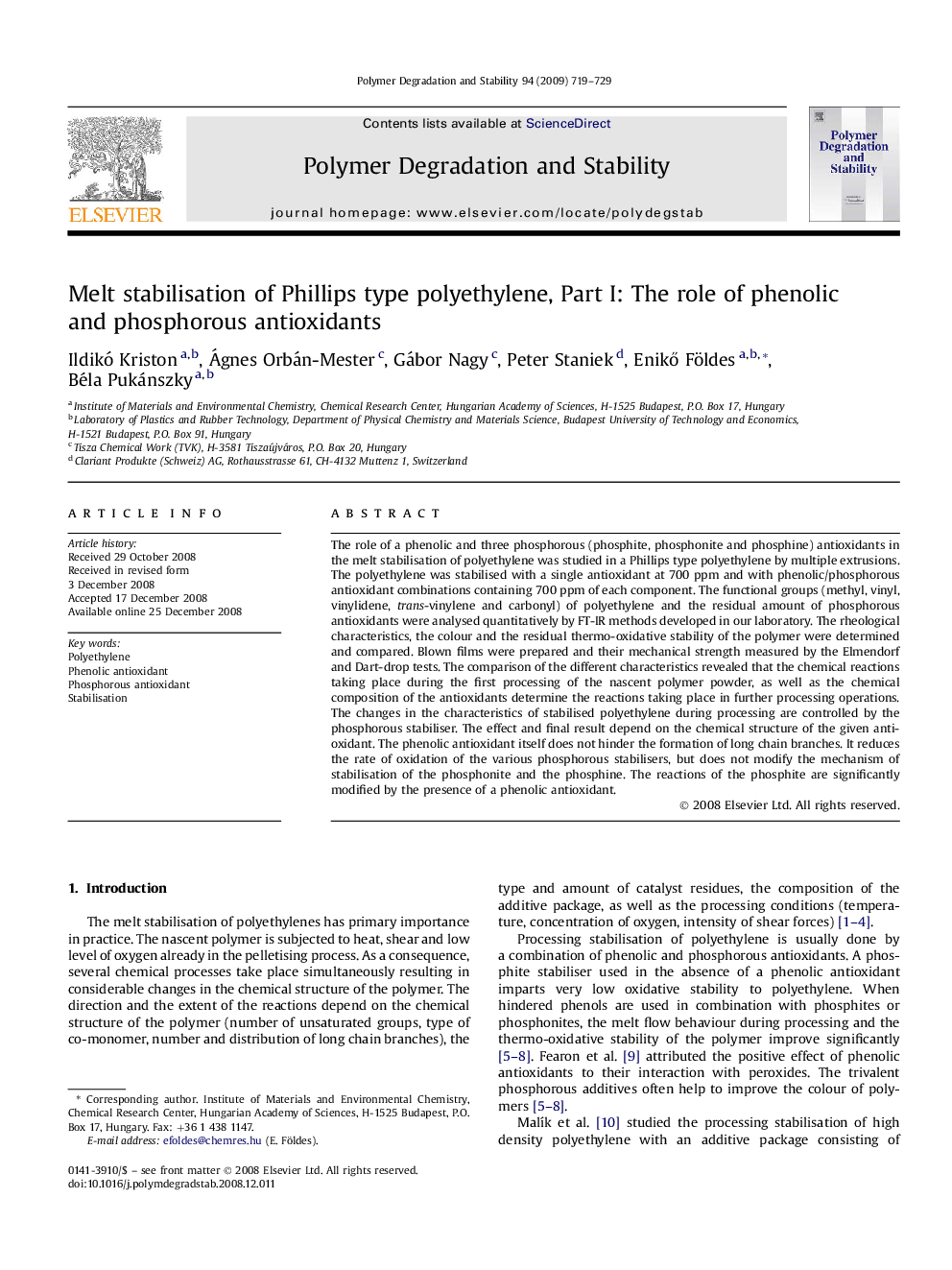| Article ID | Journal | Published Year | Pages | File Type |
|---|---|---|---|---|
| 5203530 | Polymer Degradation and Stability | 2009 | 11 Pages |
The role of a phenolic and three phosphorous (phosphite, phosphonite and phosphine) antioxidants in the melt stabilisation of polyethylene was studied in a Phillips type polyethylene by multiple extrusions. The polyethylene was stabilised with a single antioxidant at 700Â ppm and with phenolic/phosphorous antioxidant combinations containing 700Â ppm of each component. The functional groups (methyl, vinyl, vinylidene, trans-vinylene and carbonyl) of polyethylene and the residual amount of phosphorous antioxidants were analysed quantitatively by FT-IR methods developed in our laboratory. The rheological characteristics, the colour and the residual thermo-oxidative stability of the polymer were determined and compared. Blown films were prepared and their mechanical strength measured by the Elmendorf and Dart-drop tests. The comparison of the different characteristics revealed that the chemical reactions taking place during the first processing of the nascent polymer powder, as well as the chemical composition of the antioxidants determine the reactions taking place in further processing operations. The changes in the characteristics of stabilised polyethylene during processing are controlled by the phosphorous stabiliser. The effect and final result depend on the chemical structure of the given antioxidant. The phenolic antioxidant itself does not hinder the formation of long chain branches. It reduces the rate of oxidation of the various phosphorous stabilisers, but does not modify the mechanism of stabilisation of the phosphonite and the phosphine. The reactions of the phosphite are significantly modified by the presence of a phenolic antioxidant.
